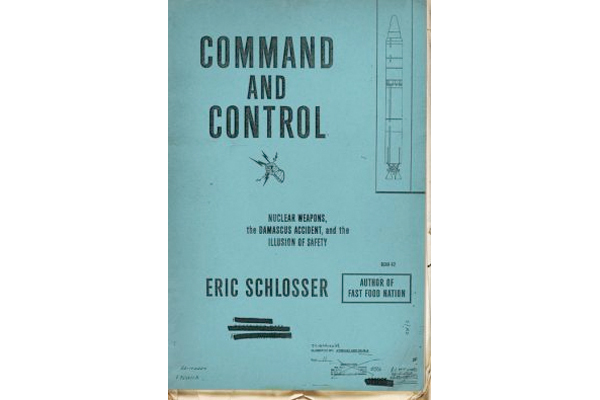Friendly Nuclear Fire

When the atom bombs dropped on Japan ushered in the nuclear era in 1945, humankind — including many of the scientists who had developed the two weapons — was shaken for a spell. A poll found that more than half of Americans favored having the United Nations take control of the armed forces of all nations.
Man, after all, had created something that got hotter than the surface of the sun and could obliterate cities in the blink of an eye. The invention that brought a swift end to World War II also made the world seem less safe. In 1952 the United States tested a hydrogen bomb that was 500 times more powerful than its progenitors, and by 1968 America boasted 30,000 nuclear devices, including land mines, depth charges, artillery shells, and torpedoes. The army soon would deploy a tactical nuclear-armed gun, the Davey Crockett, which a single soldier could fire.
“Dr. Stangelove,” the satiric 1964 film, urged us to “Stop Worrying and Love the Bomb.” We haven’t fully complied, but we do appear to have stopped worrying. At least, that is Eric Schlosser’s contention in his third book, "Command and Control: Nuclear Weapons, the Damascus Accident, and the Illusion of Safety."
The author, an investigative journalist who wrote the bestseller “Fast Food Nation,” takes the reader back to the dawn of the nuclear age. He documents decades of scary nuclear accidents, mistakes, and near misses: B-52s crashing and burning with bombs aboard, nuclear warheads tossed about in rocket mishaps, H-bombs that were inadvertently dropped from planes (one on South Carolina), false alarms of nuclear sneak attacks, bonehead policy decisions, saber-rattling, geopolitical trash talking, and more. During the Cuban Missile Crisis in 1962, Soviet leader Nikita Khrushchev warned John Kennedy that he should be careful or he would be the last president of the United States.
Schlosser ably traces the ebb and flow of superpower rivalry and its intrinsic dangers. There were American civilian and military leaders who argued for a nuclear sneak attack on the Soviet Union. Fear that Moscow would strike first led to hair-trigger, “launch-on-warning” readiness of nuclear forces for decades. President Eisenhower even delegated the decision to use nuclear weapons to NATO commanders in Europe. Like so many similar decisions over the years, this one was kept secret from the public. Nuclear weaponry and warfare are not conducive to transparency or a deliberate democratic process.
The author, however, spends most of the book building a case that Americans were, and still could be, in as much danger from their own nuclear weapons as from those of their enemies. When faced with a choice between safety and the readiness of its nuclear arsenal, the military has historically come down on the side of the latter. Being quick on the draw — i.e. using the weapons before losing them to a first strike — was viewed as vital to national survival and deterrence (Mutual Assured Destruction). Safety locks or time-consuming procedures for authorizing the use of weapons took a backseat. And what if the U.S. president were dead or incommunicado? Well, others needed to have the authority to pull the trigger.
Scary as this history is, the central narrative of the book concerns the explosion of a Titan II missile in Damascus, Ark., in 1980. This frightening tragedy is ladled out in stages throughout to build suspense and to provide a focus amid reams of other information and vignettes. And while as of this writing no nuclear weapon has exploded accidentally, servicemen have given their lives to keep us safe. For example, a previous Titan II accident in 1965 took 53 lives.
Schlosser concedes that much of his book focuses on times and practices that have since changed and improved. The end of the Cold War was a boon to improved safety. There are many fewer nuclear weapons today, and they are under tighter supervision and at lower states of readiness. Still, the United States has enough nukes — 4,650, according to the author — to get everyone’s attention: more than the Russians and more than the Chinese, who have some 240 such weapons in their arsenal.
Things may have improved, but accidents continue to occur and a single detonation would be catastrophic. Some American military leaders recently argued that about 300 nuclear weapons would be enough to deter our enemies.